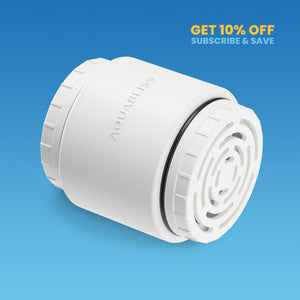Everyone should know that they don’t need to live with pain when they have scars, no matter what caused them. How we experience pain can vary, but there are many treatment options to relieve scar tissue pain, including surgery, dermatologic techniques, and topical serums. Installing a shower head filter to reduce harsh chemicals could help relieve pain or that stinging sensation. Want to know more?
This article breaks down all the common strategies to manage pain from scars and new scar tissue.
What is Scar Tissue?
Scar tissue comes from thick collagen clusters that form due to an injury or a surgical procedure to healthy skin. It’s a normal bodily process that occurs when healing takes place.
The new tissue can look different than the surrounding skin, so it stands out. It’s also not as flexible and can be uncomfortable and itchy. The human body forms scars to bring an injured area back together. So, they’re common to see after someone gets a deep cut or any other injury or surgery that causes an opening.
However, the body also makes scars as a response to healing burns and scrapes. Many people get them after scratching at their skin, too, so even bug bites, acne, and other skin conditions can cause them. If there’s an injury where the skin’s open, it could lead to visible scar tissue forming.
Internal injuries can also cause scarring in soft tissue. Scar tissue is also structurally weaker than the surrounding skin, so it’s more likely to feel painful or sensitive. In other words, scar tissue formation is the body's natural response when it takes damage. It’s normal; most people get one at some point.
What Does Scar Tissue Pain Feel Like?

Scar tissue pain can feel different for everyone. Many people describe it as a burning or itching sensation. Depending on size and location, the scar can even cause sharp or chronic pain.
Scars are usually the most painful around joints because the tougher skin is forced to bend and flex during movement. Large scars tend to hurt more than small ones since they usually result from deeper injuries, so the formation goes further into the skin.
They’re also more likely to bend during movement. The amount of pain experienced can also depend on the individual. For example, people with poor mental health tend to feel pain stronger than others. Lifestyle choices, like exercising more, can impact people’s pain tolerances by helping them build stronger tolerance levels.
Lastly, genetics plays a significant role in how someone experiences pain or sensitivity. So, no two people will feel scar soreness in the same way. Luckily, there are ways to manage the pain that can work for everyone.
How To Get Rid of Scar Tissue Pain?
Anyone dealing with persistent pain wants to manage it. Understanding what methods are available can help. While some options involve professional treatment, others can be done at home.
Here’s how to relieve scar tissue pain:
Reconstructive and Revision Surgery

Some surgeries can reduce the appearance of scars, although they’re most effective for deep, visible scars. It can make the scar harder to spot and hurt less, but it won’t completely erase it.
A surgeon can offer different treatments to remove scar tissue. They remove the old damaged tissue and stitch the skin together during the procedure. While this results in a new scar, it’s not as visible or deep.
The surgeon also does it so the new scar tissue formation won’t restrict natural movement. So, it benefits people suffering from tight scar tissue that causes mobility issues. Reconstructive scar surgery is usually a last resort for most people since there are many other, less invasive ways to manage scar tissue pain.
Dermatologic Techniques
Plenty of dermatologic treatments work well to reduce the appearance and pain of scars. The scar's size, depth, and location determine which options will work best for the patient.
For example, laser therapy can be a good option for deep scars because the light penetrates the skin easily.
These are some of the most popular ones:
- Dermabrasion treatment: The dermatologist removes the top layer of skin using a rotating device. It reveals new skin from under the scar, and the healing skin returns to being smoother.
- Chemical peels: The patient applies a chemical to the scar that removes the top layer of the skin, resulting in new skin coming to the surface. There are varying levels including light, medium, and deep peels. The dermatologist recommends one depending on the depth of the scar.
- Laser therapy treatment: An intense light beam pokes holes through the scar tissue, causing the body to produce more collagen there. The enhanced collagen production can make the scar change closer to the person’s normal skin tone.
- Microneedling: Tiny needles poke at the skin during dry needling procedures, causing collagen production to increase, leading to smoother skin as it heals. It forces the original injury to heal again after taking damage.
Topical Serums
Topical serums are another common scar tissue treatment because they’re widely accessible. Most people can use them without issue, and they’re available at drug stores.
Although, those using the serums will need to apply them consistently. They can take a while to reduce the fibrous tissue and help manage chronic pain. Topical serums also won’t absorb as deep into the skin as a specialized medical treatment, so they may not reach affected tendons or assist with chronic inflammation.
However, it can be effective for regular tissue on the surface. Silicone is a popular ingredient in OTC topical scar serums. It can hydrate the scar, reduce redness from inflammation, and make the scar less noticeable over time.
Vitamin E is another common ingredient in scar serums; there’s not as much supporting evidence that it reduces scarring and pain. However, it’s good for healing damaged tissue and promotes the body’s natural healing process.
So, applying a Vitamin E treatment after surgery might make the scar less noticeable, although it’s not as effective in changing older scars. Lastly, onion extract is a home treatment many people choose to reduce excessive scar tissue. It provides anti-inflammatory, antibacterial, and collagen benefits to the damaged tissues.
Corticosteroid and Botox Injections

While a serum treatment is best for external issues, injections can help with internal scar tissue. They create soft tissue and numb the scar, depending on the injection treatment.
Scar tissue pain can result from inflammation problems in the body. The tissues around the scar become inflamed due to increased blood flow, irritating nerves and making the affected area feel warm.
Corticosteroids are injections that provide anti-inflammatory properties. They can soothe the inflamed scar tissue, reducing pain. Botox injections offer relief differently.
They paralyze the muscles in the scar, relaxing them so there’s less pressure in the affected area. Botox can promote tissue healing, helping prevent the scar from becoming deeper and more apparent.
Silicone Adhesion Barriers
These silicone-containing scar sheets stick to the scar tissues. They’re easy to apply and are available at most drugstores. They keep silicone pressed against scar tissue, helping to reduce severe pain and itching.
The silicone also forms a protective physical barrier over the affected skin, keeping it hydrated and thin.
Tissue Massage
A professional massage therapist can provide a tissue massage as part of physical therapy. It can help restore movement, so there’s less scar tissue pain as the patient goes through their daily life.
A deep massage helps break down thick collagen proteins during healing, resulting in a thinner scar, and active blood vessels. It’s also an excellent stress reliever for many people.
The Graston Technique
The Graston technique is a manual therapy that involves metal tools that break down the scar tissue through friction. The rubbing motion also helps restore proper blood flow in that area.
Scar tissue forms in crisscross patterns on a cellular level, not always visible to the naked eye. The physical therapist can work against the grain of the scar, allowing it to heal and help manage pain or mobility issues.
Physical Therapy

Physical therapy is another type of manual therapy. The patient works with a physical therapist to increase flexibility within the body. Exercise, stretching, and massages are all part of physical therapy.
These techniques smooth out the fibrous tissue and reduce scar tissue pain. Physical therapists might also break up the scar tissue using tools through the Graston technique.
At-Home Treatments
There are so many at-home treatment options for healing scar tissues. So, if someone can’t afford surgery or physical therapy, they can still get relief from chronic pain.
Topical serums and silicone adhesion barriers are good options and are easy to find in most stores. Many people also massage the scar tissue or have a loved one do it, for 10 minutes twice daily for pain relief. Moisturizing during the massage can help restore flexibility to the scar tissue over time.
Can a Showerhead Filter Help Relieve Scar Tissue Pain?
A showerhead filter can help relieve scar tissue pain and stinging in the shower. Installing a showerhead filter to reduce harsh chemicals such as chlorine or chloramine can be a great alternative to a surgical procedure for many people.
The chemicals in shower tap water, like chlorine and chloramine, can be extremely drying. Dry scar tissues will feel worse than soft tissues, no matter how close to the skin’s surface. Let’s explore how a showerhead filter can make a difference for healthy skin.
How Do Chlorine and Chloramine Affect Scar Tissue?
Chlorine and chloramine are two common chemicals in tap water. However, they can cause chronic pain from scars because they severely dry out the skin. Injured tissue is very sensitive due to damaged nerve endings and tightness.
If harsh chemicals irritate the nerves and tendons around the scar tissue, it can lead to inflammation problems. Excessive scar tissue can become extremely painful when the skin isn’t moist enough, so it’s important to avoid exposure to chlorine and chloramine whenever possible after an injury.
However, everyone’s exposed to these chemicals every day when they shower. Those with limited movement and ongoing pain from an old injury should choose a quality water filter to help.
How Can AquaBliss Shower Filters Reduce Irritation?
An AquaBliss shower filter can help support healthy tissues by reducing the amount of harsh chemicals that are produced by a showerhead. Harsh chemical reduction can help with inflammation surrounding the injury.
Plus, the water is cleaner, which is good for a treatment plan after surgery. Lowering the amount of chemicals and contaminants in the water reduces the likelihood of infection and irritation as well.
Choose AquaBliss To Help Manage Scar Tissue Pain
AquaBliss is an outstanding choice for managing scar tissue pain. Many people enjoy the feeling of warm, clean water on their scars because it eases tension in the surrounding muscles.
So, if you or someone you know has scars from an old injury or recent surgery that they want to feel less painful or sensitive, contact AquaBliss today to learn more about what a reliable shower water filter can do to help alleviate the pain and stinging sensation brought about by harsh chemicals in their shower water.








